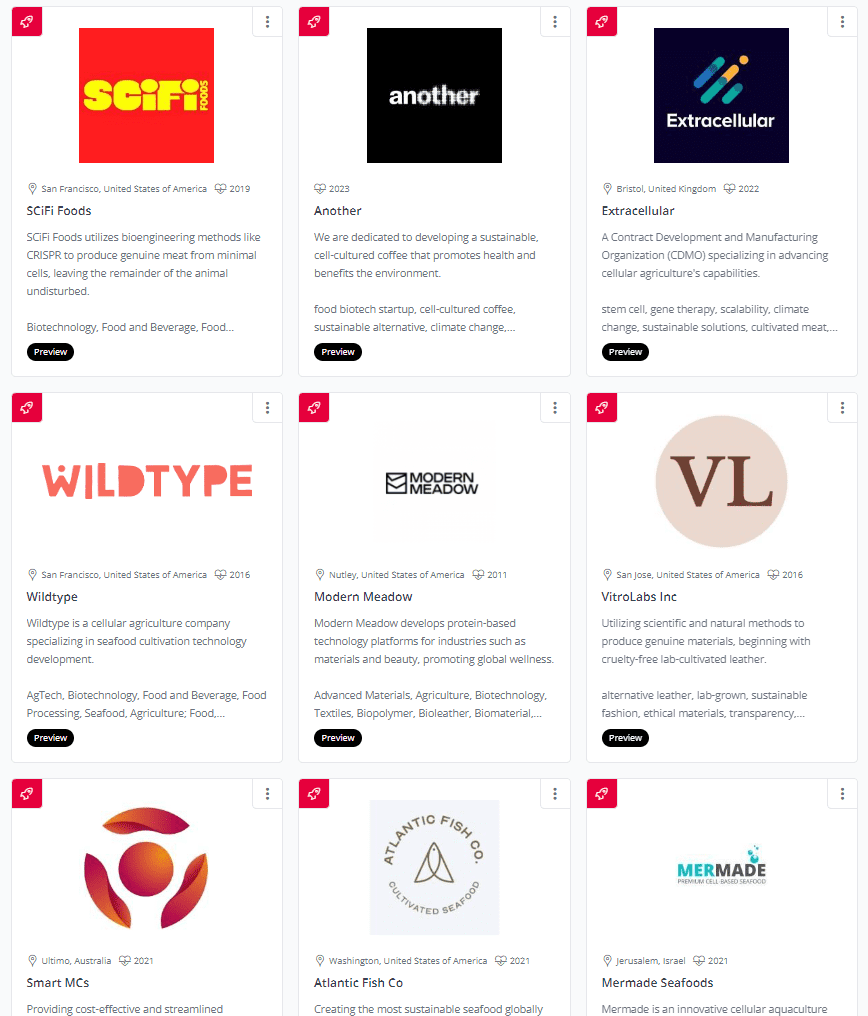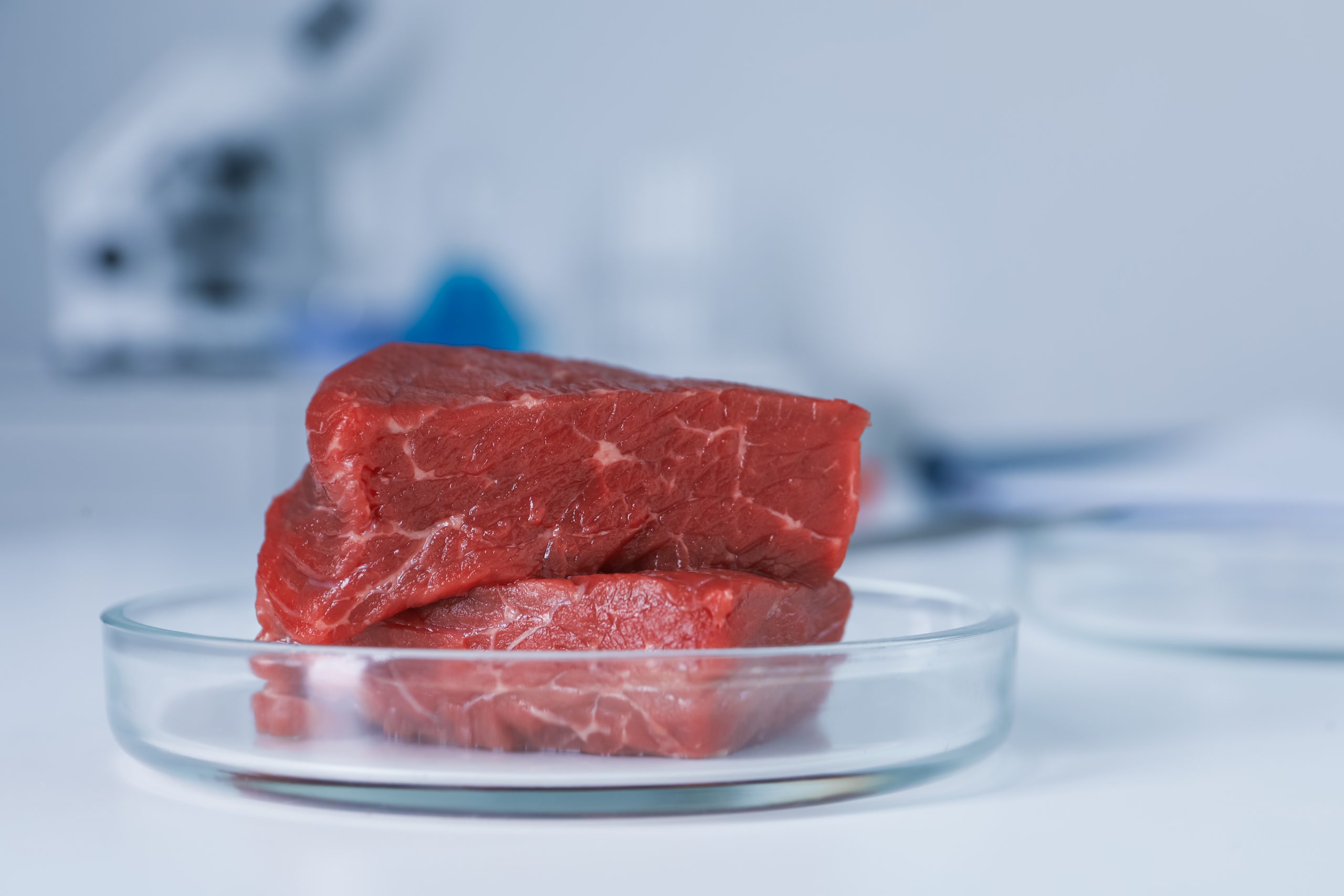In recent years, the world has been experiencing a revolutionary transformation in food production. In fact, traditional agriculture is facing numerous challenges like limited resources, climate change and also ethical concerns. As a response, an innovation known as cellular agriculture (CA) has emerged, promising to reshape the future of food production. Hence, this article explores the concept of CA, its potential to disrupt traditional agriculture, and its impact on environmental conservation. Lastly, there are some companies highlighted that are leading the charge in this exciting field.
Introduction
Innovative cellular agriculture is a method to produce animal products including for instance dairy, meat, as well as eggs by using cellular biology. In brief, in CA scientists derive stems cells from animals and cultivate them in a safe lab environment to produce pure food products. Despite their laboratory origin, these foods are genetically identical to conventional animal-based products. However, while their traditional counterparts involve animal slaughter, cellular agriculture foods do not rely on animal farming.
Relevance of Cellular Agriculture
Given a growing world population and the increasing demand for food, CA has indeed gained in importance. As our world’s population will certainly reach 9.7 billion in 2050, traditional animal agriculture will face difficulties to meet the escalating demand for food while not increasing its negative environmental impact.
The global food production must increase by 70% to meet the food demand (Food and Agriculture Organization). CA has the potential to reduce greenhouse gas emissions by 78 to 96%, land use by 95%, and water use by 82 to 96% (Tuomisto and de Mattos). Being a reasonable solution to the growing food demand, the global CA market size reaches $515.24 billion by 2030.
Benefits of Cellular Agriculture
A rise of cellular agriculture brings numerous benefits that address some of the most pressing global challenges we face today.
- Environmental Conservation: Firstly, transitioning to cellular agriculture will have a positive environmental impact.
- Animal Welfare: Secondly, it provides a humane alternative to traditional animal farming, eliminating the need for raising and slaughtering animals for food.
- Food Supply: Thirdly, with the potential of large-scale production in controlled environments, CA is not affected by climate-related disruptions or political tensions.
- Food Security: Fourthly, Controlled CA helps to avoid diseases that result from hunted or farmed animals. Some examples include COVID-19, the 1918 influenza and H1N1 swine flu as well as preventing the emergence of E. coli, salmonella, and viruses that contaminate water sources and meat.
- Nutrition: Finally, cells cultivated in bioreactors offer many possibilities for the production of novel and nutritious food products allowing a balanced and vitamin-rich diet.
Challenges Associated with Cellular Agriculture
CA needs to overcome some challenges first to embrace all its benefits.
- High Production Costs: Firstly, the production costs of CA foods remain considerably high. A large cost portion arises from the need for specialized growth media, bioreactors, and cell culture techniques.
- Scalability: Secondly, scaling up CA from laboratory-scale to commercial-level production poses a considerable challenge. Consequently, achieving economies of scale is critical to making lab-grown products more affordable and accessible to consumers.
- Public Acceptance and Regulatory Hurdles: Lastly, consumer acceptance and regulatory frameworks present significant barriers to the adoption of CA. Challenges related to consumer perception, including concerns about taste, safety, and the ‘naturalness’ of lab-grown products, need to be addressed. Establishing clear regulatory guidelines and standards for these novel products is crucial for their market entry and acceptance.
Ongoing research and technological advancements are continuously addressing these challenges. As the industry evolves, production costs are expected to decrease, and public acceptance may grow as consumers become more aware of the environmental and ethical advantages of CA.
Main Startups in the Field
The cellular agriculture industry is rapidly growing, with numerous start-ups leading the change. Notable companies like UPSIDE Foods, JUST Inc., and Aleph Farms are at the forefront of developing cell-based meat and other animal products. Research institutions and academic centers worldwide are actively involved in advancing the science and technology of cellular agriculture.

Explore all Key Player:
Example Case Study
Founded in early 2016, Cell Ag Ltd stands as the first UK startup in the cultured protein sector. With funding from InnovateUK in 2018, the company developed a proof-of -concept bioreactor system. Showcased at the Nemo Science Museum in Amsterdam (2019), it represents the world’s first publicly demonstrated automated cultured meat system. Their technology shows a 300 times smaller footprint and a remarkable 70% reduction in operational costs. As part of their vision, they aspire to become the leading global technology solutions provider for the cultured meat industry.
Takeaway
Lastly, cellular agriculture presents a revolutionary paradigm for the future of food production, offering a sustainable, humane, and environmentally responsible solution. As technology progresses and production scales up, cellular agriculture has the potential to transform the food industry and contribute to a more sustainable and resilient global food system. As we continue to support and invest in companies leading this cause, we are moving closer to a world where delicious and nutritious food is produced without harming animals or our planet.
Explore related topics
- Agriculture & Forestry Posts
- Aquaculture Posts
- Bio-based Product Posts
- Bio-Resource Conversion Industry Posts
- Blog
- CO2 & Waste Utilization Posts
- Food & Beverage Posts
- Water & Renewable Energy Posts
Sources:
- Tuomisto and de Mattos: https://pubs.acs.org/doi/10.1021/es200130u
- Food and Agriculture Organization of the United Nations: https://www.fao.org/state-of-food-security-nutrition/2021/en/
- Good Food Institute: https://gfi.org/resource/cultivated-meat-eggs-and-dairy-state-of-the-industry-report/
- Proveg International: https://corporate.proveg.com/wp-content/uploads/2023/06/All-you-need-to-know-about-cellular-agriculture_report.pdf
- Cellular Agriculture Ltd: https://www.cellularagriculture.co.uk/


